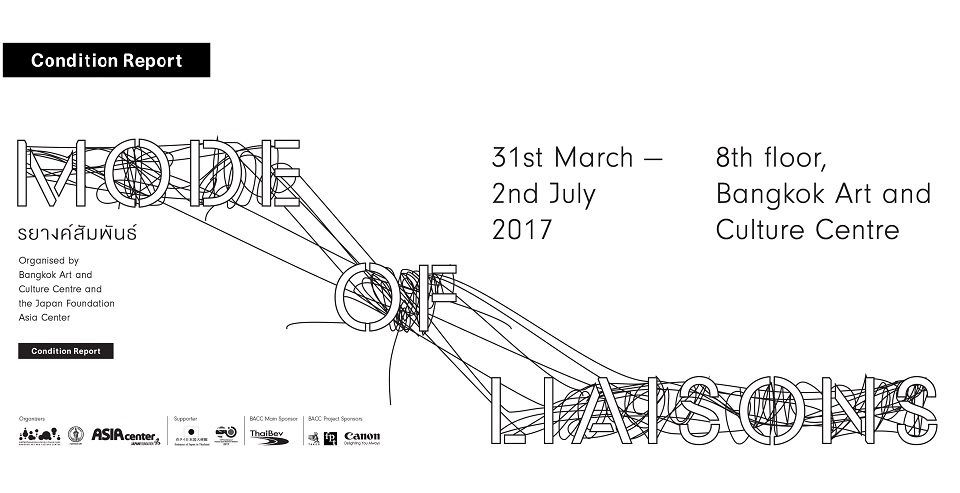
The Japan Foundation Asia Center will present "Condition Report" in 2017, a collaborative art project by curators from Japan and Southeast Asian countries.
"Condition Report" is composed two parts. The first phase of the project consists of 4 major collaborative exhibitions held in Jakarta, Kuala Lumpur, Manila and Bangkok. The second phase consists of 14 local exhibitions.
"Mode of Liaisons" in Bangkok is the fourth collaborative exhibition of this project.
Event detail
| Title | Condition Report: Mode of Liaisons |
|---|---|
| Period | March 31 - July 2, 2017 * The Opening Ceremony will be held on March 30. Details Here. |
| Venue | Bangkok Art and Culture Centre >>Access |
| Organizers | Bangkok Art and Culture Centre
The Japan Foundation Asia Center |
| Curators | Pichaya Aime Suphavanij [Curator, Bangkok Art and Culture Centre] (Thailand) |
| Co-Curators | Aung Myat Htay [Artist / Curator] (Myanmar)
Bayu Genia Krishbie [Assistant Curator, National Gallery of Indonesia] (Indonesia) Nakamura Fumiko [Curator, Aichi Prefectural Museum of Art] (Japan) |
| Artists/ Collectives |
Korakrit Arunondchai (Thailand)
Au Sow Yee (Malaysia) Universe Baldoza (Philippines) Ho Rui An (Singapore) Miyagi Futoshi (Japan) Roslisham Ismail aka Ise (Malaysia) Albert Samreth (USA) Ukrit Sa-nguanhai (Thailand) Sindikat Campursari / Mashup Syndicate (Indonesia) Tamura Yuichiro (Japan) Mark Teh (Malaysia) Rirkrit Tiravanija (Thailand/USA) Zai Kuning (Singapore) |
| Related Websites |
Bangkok Art and Culture Centre | exhibitions Condition Report: Mode of Liaisons (Facebook Page) |
[The brochure of "Condition Report" (PDF/4.48MB)]
[Curators' Message]
The project employs the idea of "Hybridity as a Method" as curatorial methodology. It aims to explore diverse mode of thinking, articulation and creation of communities through bypassing, mediating, translating or negotiating with various fields of academic disciplines, medium of expression, and aesthetic languages. Starting from specific stand points of departure, it responds to certain contexts of society to address various communities and individuals. The methodology is a dialectical process setting in motion to perceive each culture comparatively noting how they come into contact with each other, changing by exchanging, colliding through collisions as much as through break-throughs and hopes.
Here, the term hybridity functions as a method, a focus from the anthropological point of view that this is never-ending process of contacting with and incorporating differences, which is a fundamental condition of every culture, hence defies any forms of static or singular identity. Hybridity then become the content of the art and the curatorial instrument in the context of SEA.
(Pichaya)









